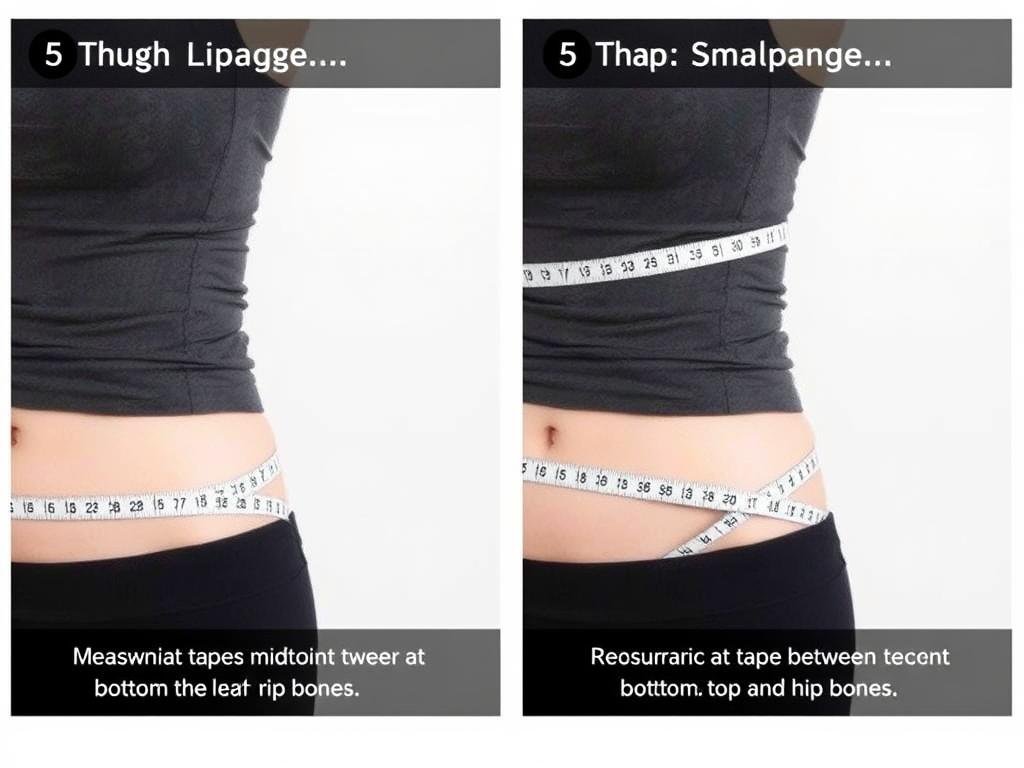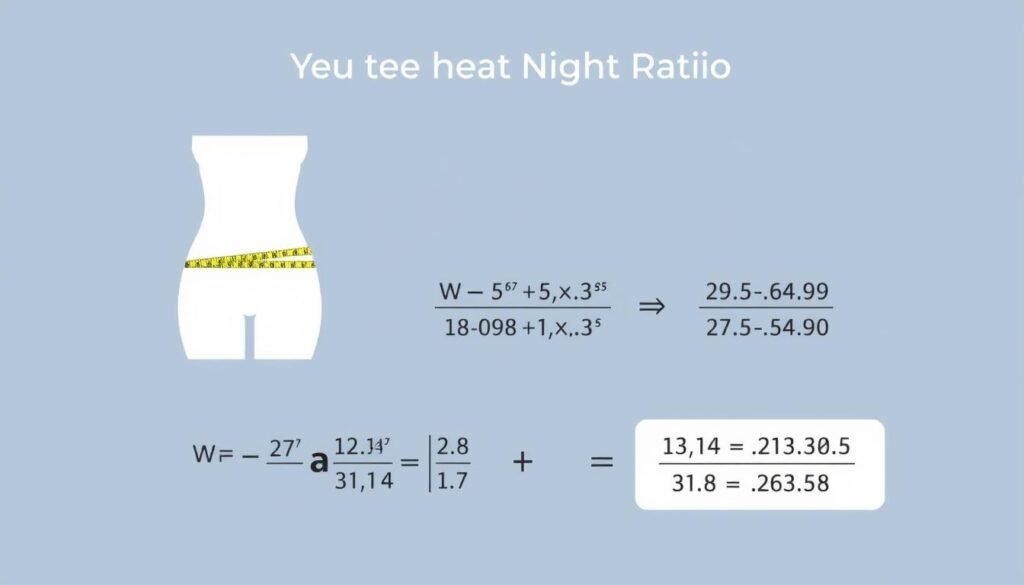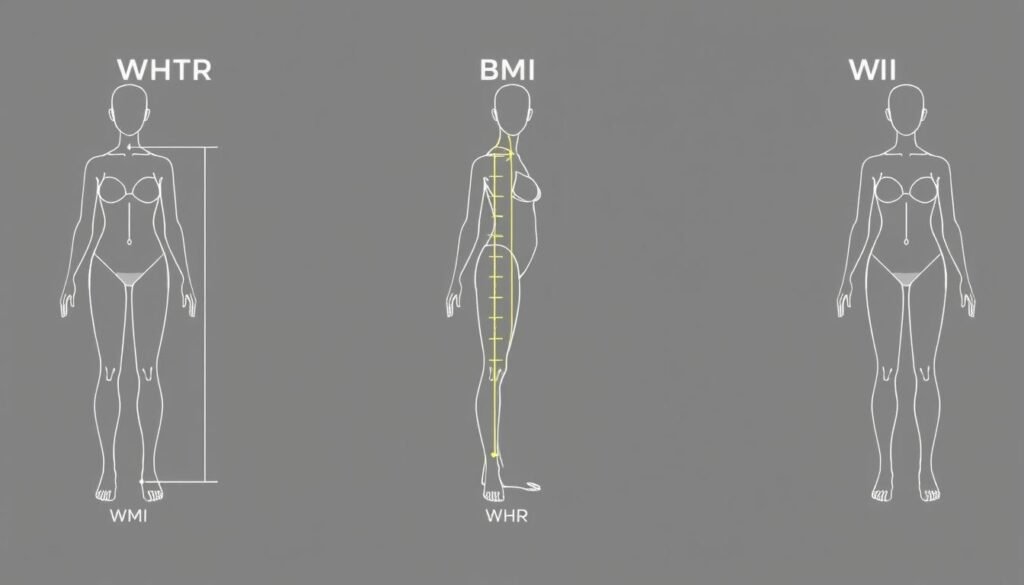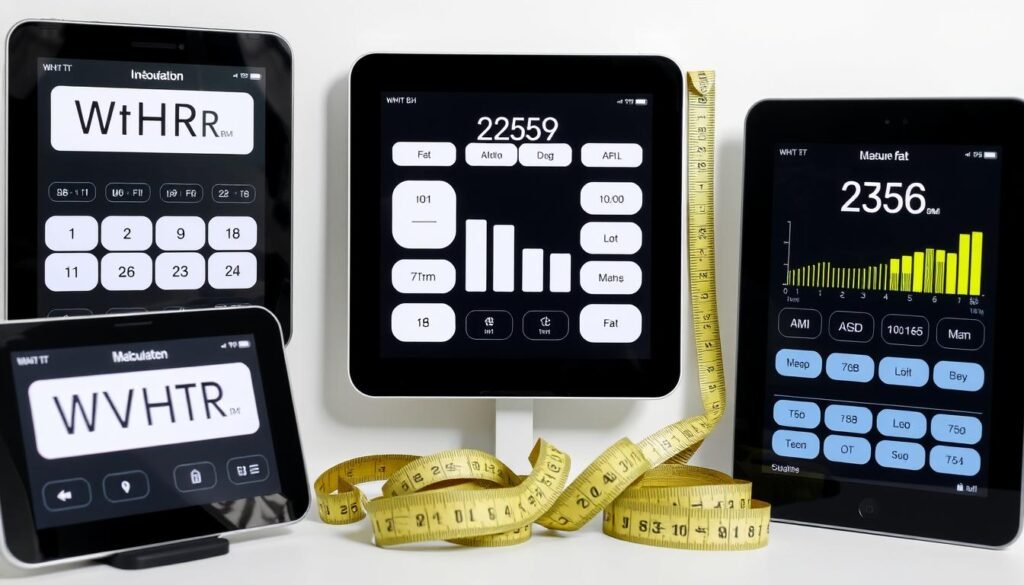Use our Waist to Height Ratio Calculator to assess your body fat and health risk. Discover if your waist size is healthy for your height instantly.
Your Waist to Height Ratio Report
Basic Information
Height:
Waist:
WHtR Results
Waist to Height Ratio:
Category:
Health Insights
Recommendations
The waist-to-height ratio (WHtR) is a simple yet powerful health indicator that can help assess your risk for various health conditions. Unlike BMI, which only considers weight and height, WHtR focuses specifically on abdominal fat distribution - a critical factor in predicting cardiovascular disease, type 2 diabetes, and other health risks. Our free calculator tool helps you determine your WHtR and understand what it means for your health.
Calculate Your Waist-to-Height Ratio
Enter your measurements below to instantly calculate your waist-to-height ratio. For the most accurate results, measure your waist at the narrowest point between your ribs and hips after exhaling.

Understanding Your Waist-to-Height Ratio Results
Your waist-to-height ratio is a simple indicator of your health risk related to abdominal fat. Research shows that keeping your waist circumference to less than half your height (a ratio below 0.50) is associated with lower health risks.
| WHtR Range | Category | Health Risk | Recommendation |
| Below 0.35 | Extremely Slim | Possible underweight concerns | Consult healthcare provider |
| 0.35 - 0.42 | Slim | Low risk | Maintain healthy habits |
| 0.43 - 0.49 | Healthy | Low risk | Maintain healthy habits |
| 0.50 - 0.57 | Overweight | Increased risk | Consider action to reduce |
| 0.58 - 0.62 | Very Overweight | High risk | Take action to reduce |
| Above 0.63 | Obese | Very high risk | Take action and consult healthcare provider |

How to Measure Your Waist Correctly
Accurate measurements are essential for calculating your waist-to-height ratio. Follow these steps to ensure you get the most accurate results:
- Stand upright with your feet together and arms relaxed at your sides
- Find the midpoint between the bottom of your ribs and the top of your hip bones
- Wrap a measuring tape around your waist at this point
- Ensure the tape is horizontal around your body and not twisted
- Take the measurement after a normal exhale (don't suck in your stomach)
- Record the measurement to the nearest 0.1 inch or 0.5 cm

Pro Tip: For the most consistent results, take your measurements at the same time of day, preferably in the morning before eating. Wear thin clothing or measure directly against your skin.
The Waist-to-Height Ratio Formula
The waist-to-height ratio is calculated using a simple formula:
WHtR = Waist Circumference ÷ Height
For example, if your waist measures 32 inches and your height is 68 inches, your WHtR would be:
WHtR = 32 ÷ 68 = 0.47
This result (0.47) falls within the healthy range, indicating a lower risk of obesity-related health issues.

WHtR vs. Other Health Metrics
While several metrics can assess health risks related to body composition, the waist-to-height ratio offers distinct advantages:
Waist-to-Height Ratio (WHtR)
- Accounts for fat distribution, specifically abdominal fat
- Simple to measure and calculate
- Same healthy range for men and women
- Better predictor of cardiovascular risk than BMI
- Applicable across different ethnic groups
Body Mass Index (BMI)
- Doesn't distinguish between muscle and fat
- Doesn't account for fat distribution
- Different ranges for different populations
- May misclassify muscular individuals
- Less accurate for elderly populations
Waist-to-Hip Ratio (WHR)
- Accounts for fat distribution pattern
- Requires additional hip measurement
- Different healthy ranges for men and women
- Good predictor of health risks
- More complex to interpret than WHtR

Research published in the journal Obesity Reviews found that waist-to-height ratio was a better predictor of cardiovascular disease risk and diabetes than both BMI and waist circumference alone.
Health Implications of Your Waist-to-Height Ratio
Your waist-to-height ratio is more than just a number—it provides valuable insights into your current health status and potential future risks.
Health Risks of High WHtR
- Increased risk of cardiovascular disease
- Higher likelihood of developing type 2 diabetes
- Greater risk of metabolic syndrome
- Increased risk of hypertension (high blood pressure)
- Higher risk of certain cancers
- Potential respiratory issues
Benefits of Healthy WHtR
- Lower risk of heart disease and stroke
- Reduced likelihood of developing diabetes
- Better overall metabolic health
- Improved mobility and physical function
- Potentially longer lifespan
- Better quality of life

"Keep your waist circumference to less than half your height."
Tips to Improve Your Waist-to-Height Ratio
If your waist-to-height ratio is higher than the recommended range, these evidence-based strategies can help you reduce abdominal fat and improve your overall health:
Dietary Changes
- Reduce processed food consumption
- Limit added sugar intake
- Increase fiber consumption
- Focus on whole, unprocessed foods
- Practice portion control
Physical Activity
- Aim for 150+ minutes of moderate exercise weekly
- Include both cardio and strength training
- Add high-intensity interval training (HIIT)
- Incorporate more movement throughout your day
- Find activities you enjoy to maintain consistency
Lifestyle Habits
- Prioritize quality sleep (7-9 hours)
- Manage stress through mindfulness or meditation
- Stay hydrated throughout the day
- Limit alcohol consumption
- Track progress with regular measurements

Ready to Track Your Progress?
Measure your waist-to-height ratio regularly to monitor your progress. Even small improvements can significantly reduce your health risks.
Frequently Asked Questions About Waist-to-Height Ratio
How often should I measure my waist-to-height ratio?
For monitoring purposes, measuring your waist-to-height ratio once every 4-6 weeks is sufficient. More frequent measurements might not show meaningful changes, while longer intervals might miss important trends. Always measure at the same time of day for consistency.
Is waist-to-height ratio accurate for all body types?
Waist-to-height ratio is generally applicable across different body types, ages, and ethnic groups. However, it may be less accurate for pregnant women, elite athletes with very high muscle mass, or individuals with certain medical conditions that affect body composition.
Can children use the waist-to-height ratio calculator?
Yes, waist-to-height ratio can be used for children over 5 years old. The same general guideline applies—keeping the waist circumference to less than half the height. However, interpretation should be done with guidance from healthcare providers for growing children.
How quickly can I improve my waist-to-height ratio?
With consistent healthy eating and regular physical activity, you might see improvements in your waist-to-height ratio within 6-12 weeks. A healthy, sustainable rate of change is about 0.5-1% reduction in waist circumference per month. Rapid changes are not recommended and may not be sustainable.
Should I rely solely on waist-to-height ratio to assess my health?
While waist-to-height ratio is a valuable indicator, it should be used alongside other health metrics and regular medical check-ups. Blood pressure, cholesterol levels, blood glucose, and overall fitness are also important factors in assessing your complete health picture.

Why Your Waist-to-Height Ratio Matters
The waist-to-height ratio is a simple yet powerful tool for assessing your health risk related to abdominal fat. By keeping your waist circumference to less than half your height, you can significantly reduce your risk of serious health conditions like heart disease, stroke, and type 2 diabetes.
Regular monitoring of your WHtR, combined with healthy lifestyle choices, can help you maintain optimal health and well-being. Remember that small, consistent changes to your diet and physical activity can lead to meaningful improvements in your waist-to-height ratio and overall health.

Take Control of Your Health Today
Start by knowing your numbers. Calculate your waist-to-height ratio now and take the first step toward a healthier future.

